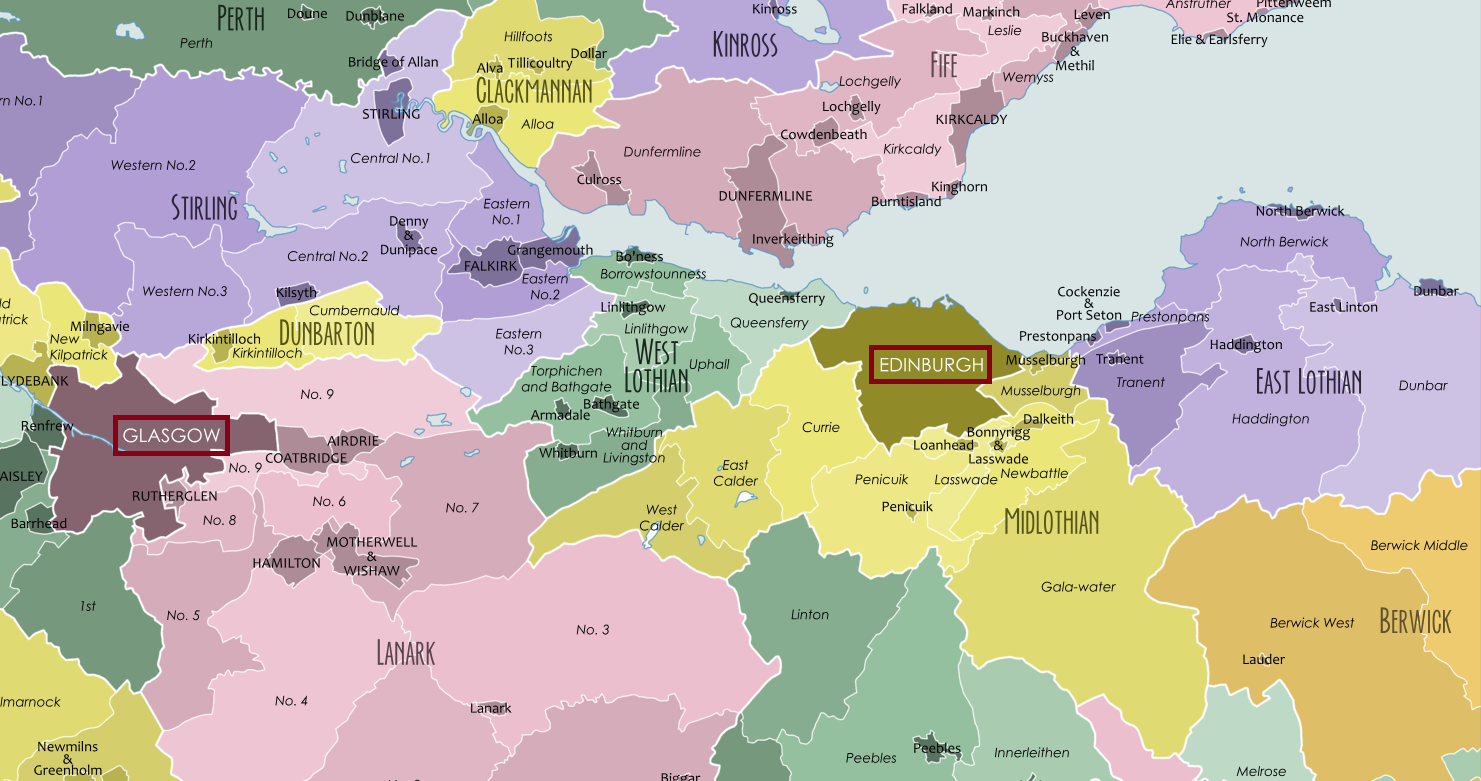
My name is Meagan Cairns, and I am the newest archivist at the Maryknoll Mission Archives. Before joining Maryknoll, I worked as a librarian and professional genealogist. Assisting researchers in recovering and discovering lost family history is still my favorite part of my work. There’s something magical about reconnecting people with their past (and sometimes present) relatives. People trust genealogists with private details about their family’s lives and, in return, we get to share in their joy of discovery, grieving for loved-ones who have passed on, and healing generational wounds. It’s an intimate experience that continually reaffirms our connections to one another and our shared humanity.
(Map by XrysD – Own work, CC BY-SA 3.0)
When I began working here, I believed I was the first person in my family connected to Maryknoll. A moment of curiosity proved me wrong. I stumbled across the biography of Father Robert J. Cairns and gained a cousin. You can read Fr. Cairns’ biography on our website here: https://maryknollmissionarchives.org/deceased-fathers-bro/father-robert-j-cairns-mm/.
For the record, I have not yet discovered where our lineage converges in the family tree. So how do I know we’re related? The research suggests that our family trees connect in Midlothian County, Scotland.
The Cairns surname is not very popular which is extraordinarily helpful when trying to conduct family research! With the exception of people who marry into the family, or adopt the surname (which is rare), all members of the Cairns Clan can trace their heritage back to the Midlothian and West Lothian counties of Scotland (Wikimedia Foundation, 2021). Conveniently located near Edinburgh and Glasgow, many clan members still live in these cities today.
Once I established that Fr. Cairns and I are most certainly descended from the same place, I wanted to know more about my distant cousin. What was his particular life story? Here’s what I learned.
Fr. Robert J. Cairns
Robert John Cairns was born in Glasgow, Scotland, on August 21, 1884 to Robert and Janet (Allison) Cairns. He was one of eight siblings, all with historically Scotch/English names; Janet, James, Archie, Robert, Thomas, Marion, George, and Margaret. Records indicate the Cairns family decided to immigrate not long after their son Robert’s birth. Like many U.S. immigrants during the 1800’s, Robert Cairns immigrated first to secure employment and housing before sending for his wife and children. Janet and four children, including one year old Robert J., arrived in the U.S. through the port of Boston, MA. The family settled in Worchester, MA, where the four youngest children were born.
Robert and his siblings attended St. John’s Parochial School and St. John’s High School. Unfortunately, the Cairns Clan has never been a wealthy one. Feeding, clothing, and educating eight growing children became increasingly challenging. After completing his freshman year of high school, Robert was required to take on a full-time job to help support the family. Robert was devastated. Even at a young age, he dreamed of enrolling in college and becoming a priest.
Leaving high school was sadly not an uncommon occurrence in their neighborhood. Many teenagers worked during the day and took classes at a local night school in hopes of bettering their situation. With assistance from a neighboring teen, Robert was able to enroll in night school as well and continue his education. Robert never allowed this setback to deter him and, over time, he achieved his educational goals. He enrolled at Holy Cross College in Worcester, was accepted into St. Mary’s Seminary in Baltimore, and eventually joined Maryknoll.
On May 18, 1918, Fr. Robert John Cairns was ordained at the age of 34.
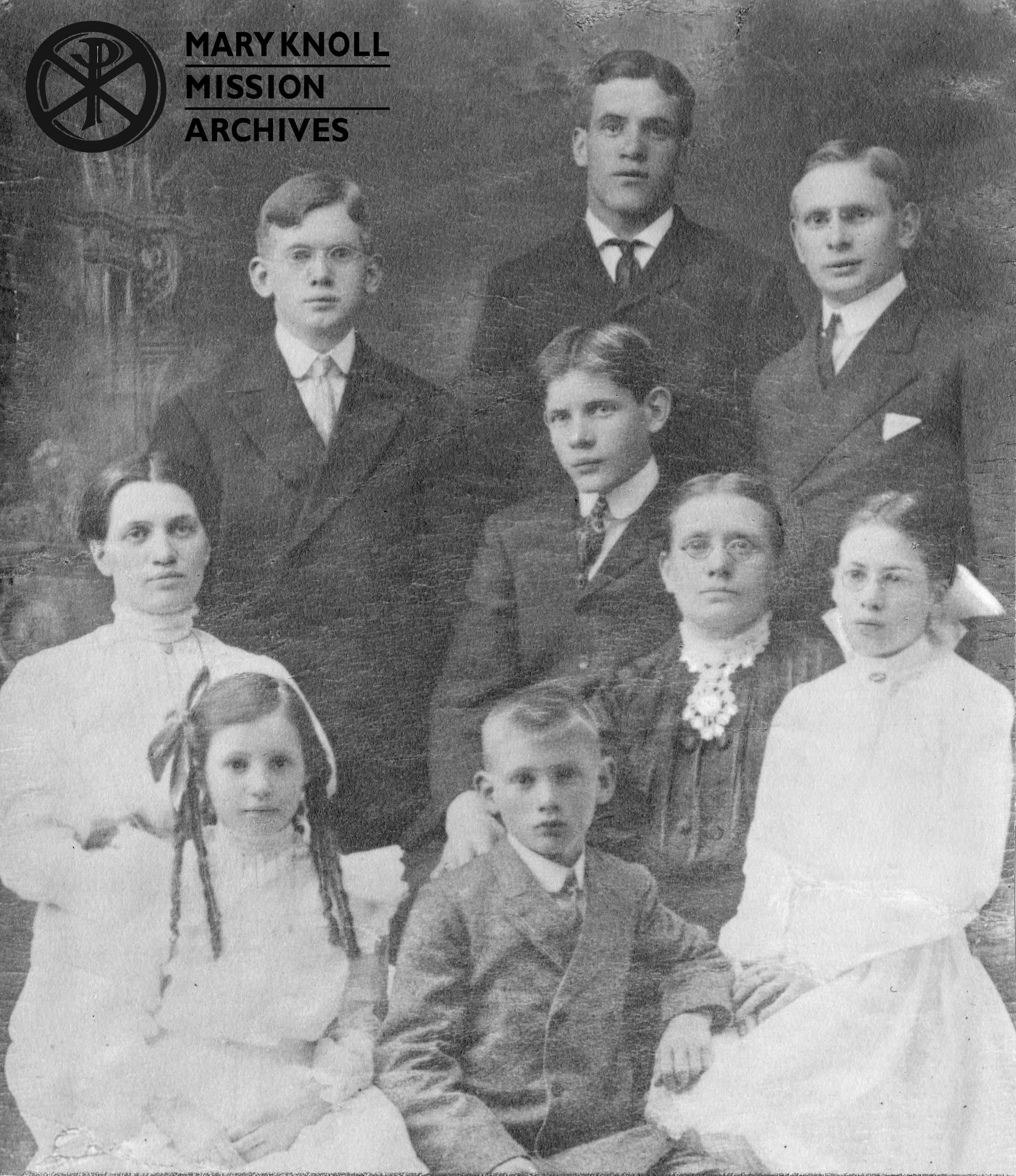
The Cairns Family, 1905. Robert J. can be see in the back row on the left. Robert Cairns (father) is not pictured here, as he passed away in 1902.
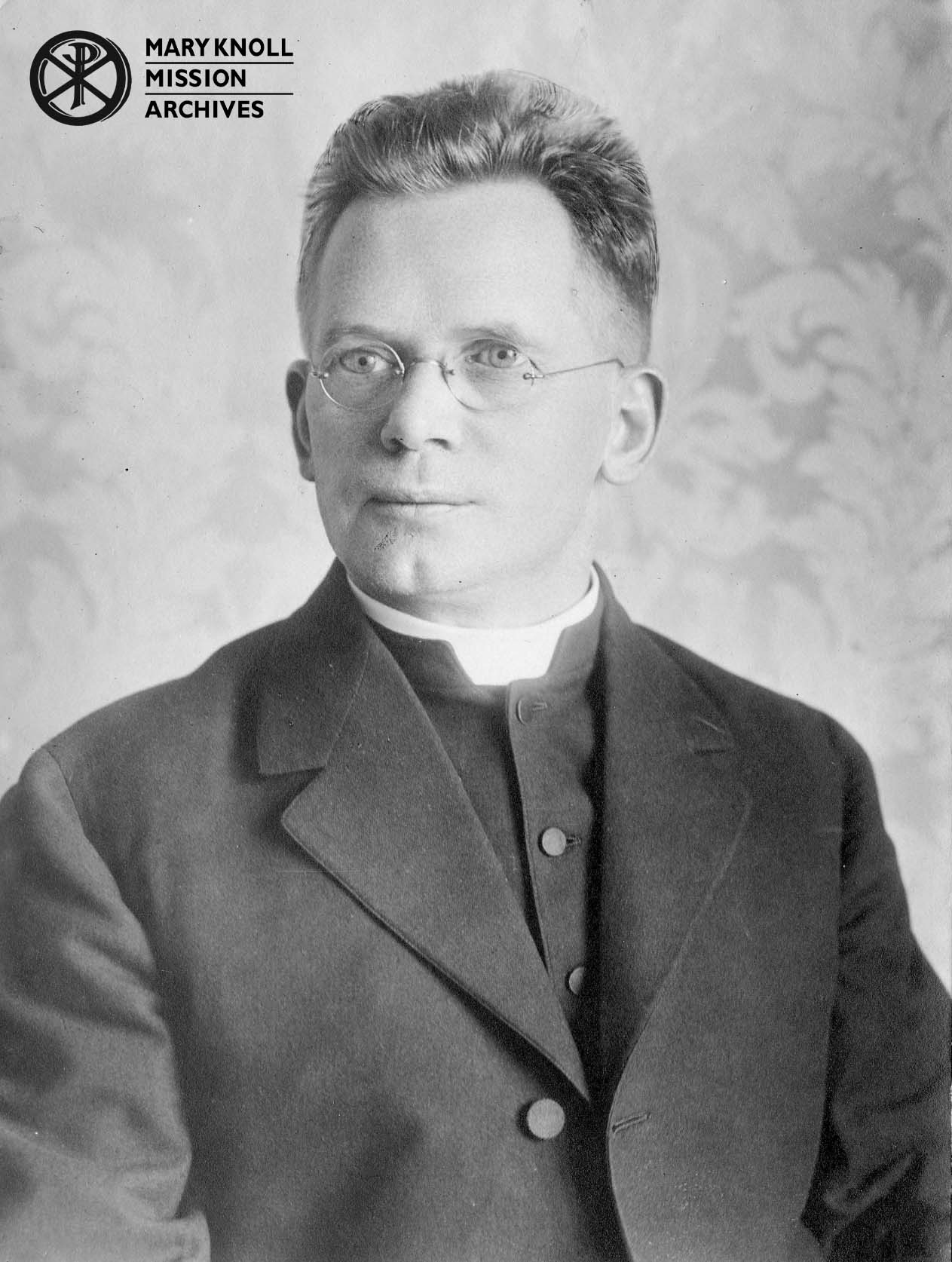
Fr. Robert J. Cairns, circa 1930’s
Shared physical traits can indicate common genetic ancestry. Note that both subjects have high foreheads, similar nose shapes, and require glasses.
Please remember that physical indicators are not enough proof by themselves! Family history research is still needed to prove any familial claim.
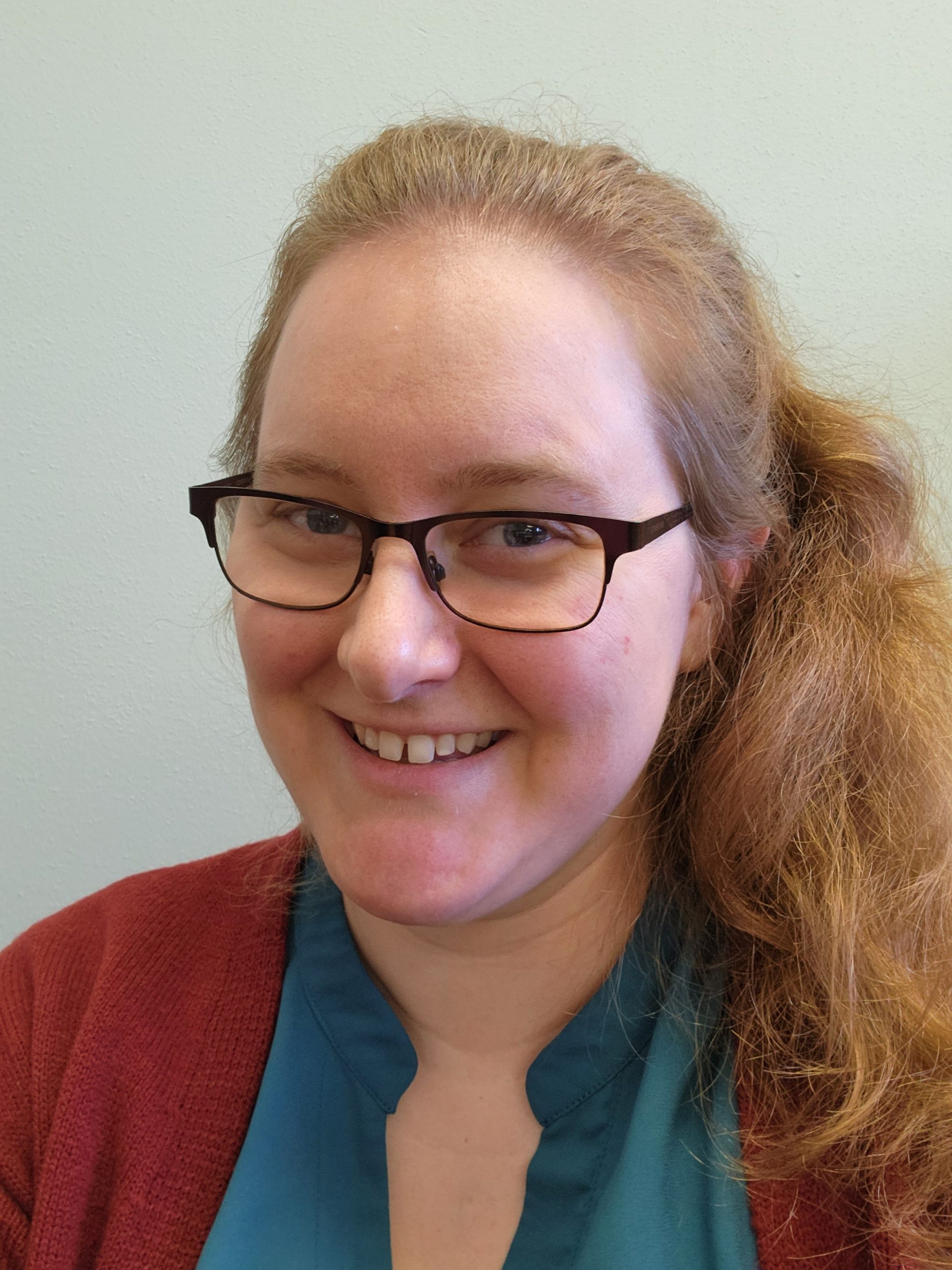
Meagan V. Cairns, circa 2022
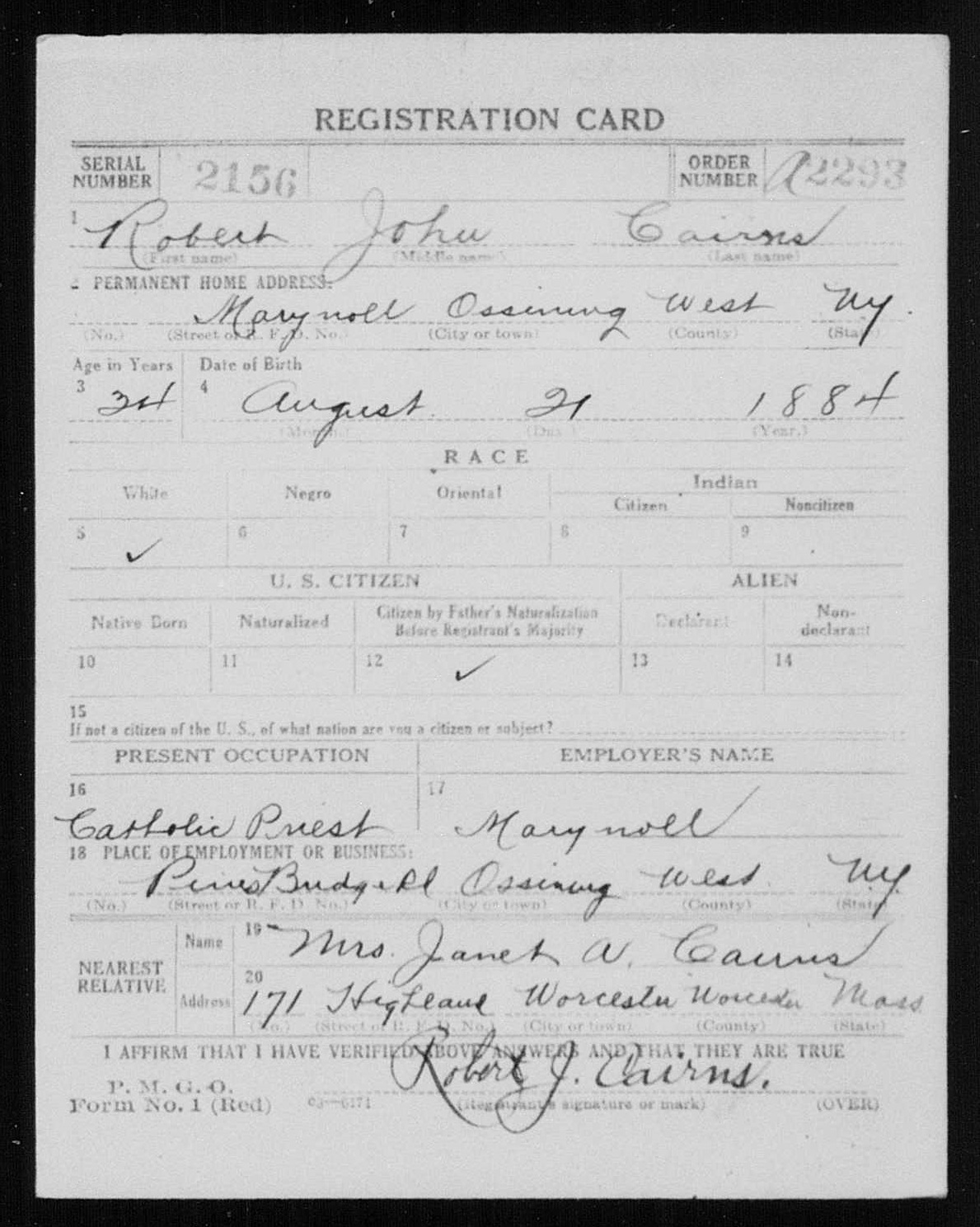
Did you know…?
Fr. Cairns was required to register for the draft during WWI. The Selective Service Act of 1917 required all men ages 21 – 30 to register. Fr. Cairns was exempt from service due to his profession.
You can learn more about the Selective Service Act of 1917 by clicking here!
Missioner in China
It wasn’t long before Fr. Cairns received his first overseas assignment in Yeungkong, China. Around the same time, his mother Janet and several of her adult children moved from Worchester, MA to San Diego, CA. Imagine learning by letter that your childhood home had been sold, and your family had moved to the other side of the country… while you were in China! Fr. Cairns seems to have taken it in stride, however. It was understood at the time that Missioners might never see their homes again. The rare occasions when he returned home during his life would have been celebratory events for his family. Fr. Cairns spent roughly 20 years missioned in China.
Fr. “Sandy” to his parishioners and “Bobbie” to his friends, Fr. Cairns was known best for his “cheerful, optimistic perseverance”. Learning Catonese was a challenge for him at 36, but he persisted in his studies. He steadily improved his communication skills through determination and dedication. According to several accounts, Fr. Cairns carried his language books with him wherever he went so he could practice in his spare time. He was frequently seen studying late into the night. Fr. Cairns continued his education independently until the end of his life.
His other faithful traveling companion was his mandolin. Fr. Sandy would play at the slightest provocation, to the joy of his latest captive audience. With his mandolin, cheerful demeanor, and good humor at hand, he could make friends anywhere he went. The only thing he loved more than sharing joy with others was sharing a good meal. Despite walking several miles a day to visit parishioners, Fr. Cairns continued to gain weight throughout his time in China. Having experienced poverty and hunger during his own childhood, it makes sense that he never turned down a meal and was always grateful for the generosity of others.
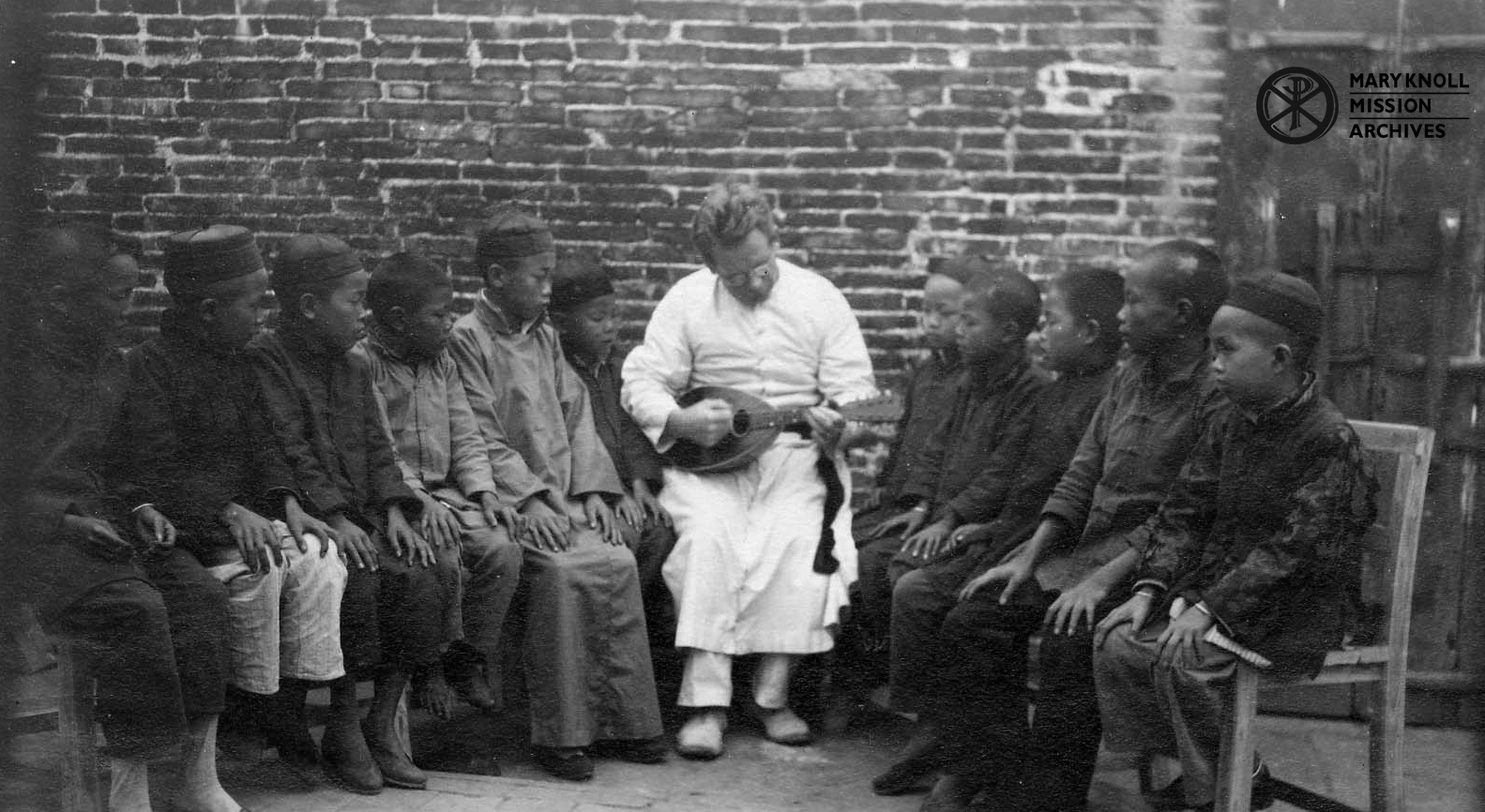
Fr. Cairns and his beloved mandolin perform for an audience, circa 1920.
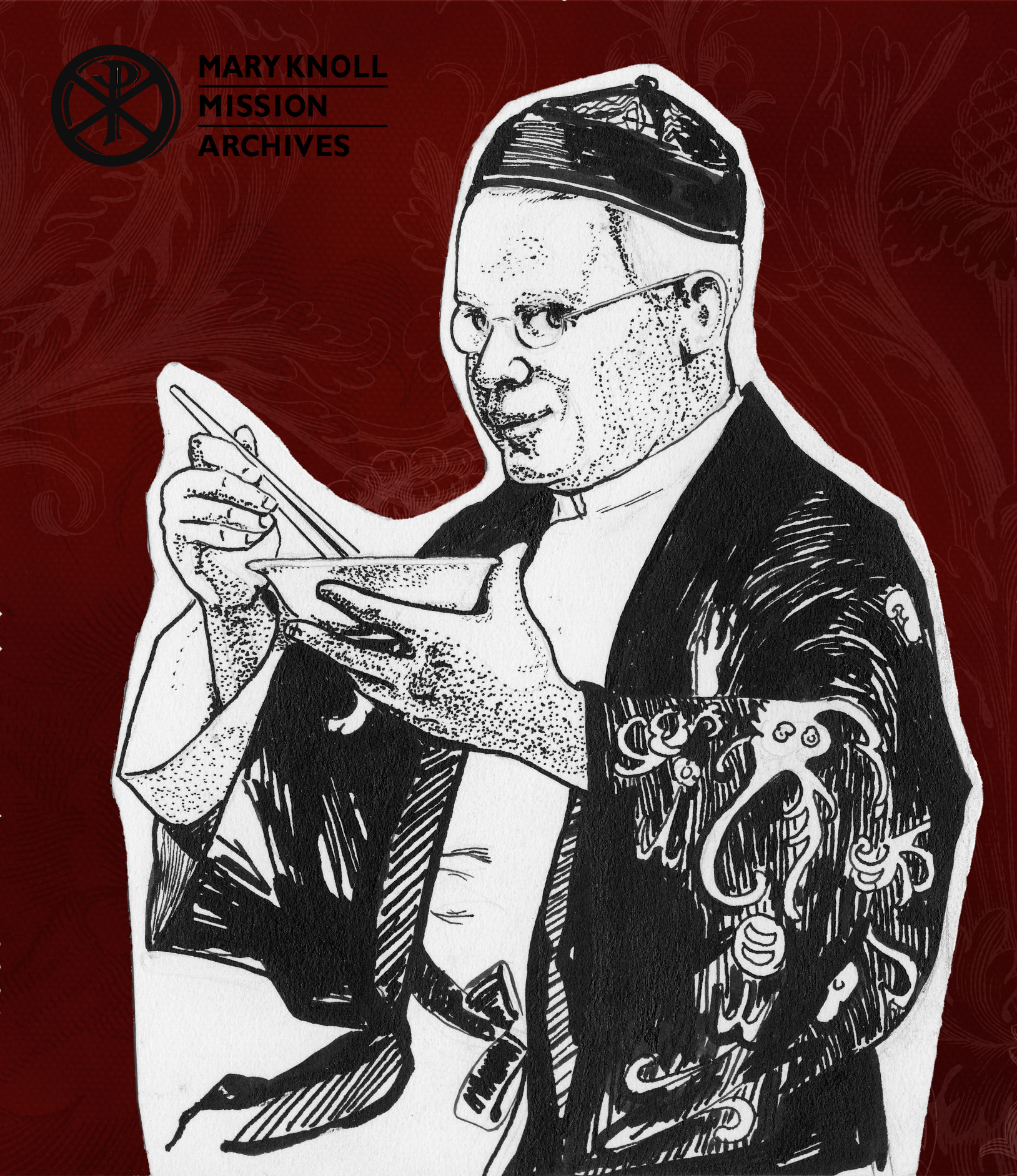
Artist unknown. Fr. Sandy Cairns. n.d., Pen and black ink. This work was arguably inspired by a similiar photograph in our collection. Unlike the photo, Fr. Sandy is focusing on the viewer rather than his food.
Excerpt from a letter to Fr. Robert J. Cairns
“May God continue to strengthen you in your work. You are sowing seed whose fruit may be gathered by others, but your reward will be none the less great – probably greater – for lack of the sensible encouragement which others may have.”
Fr. James A. Walsh, Maryknoll co-founder
May 8, 1928
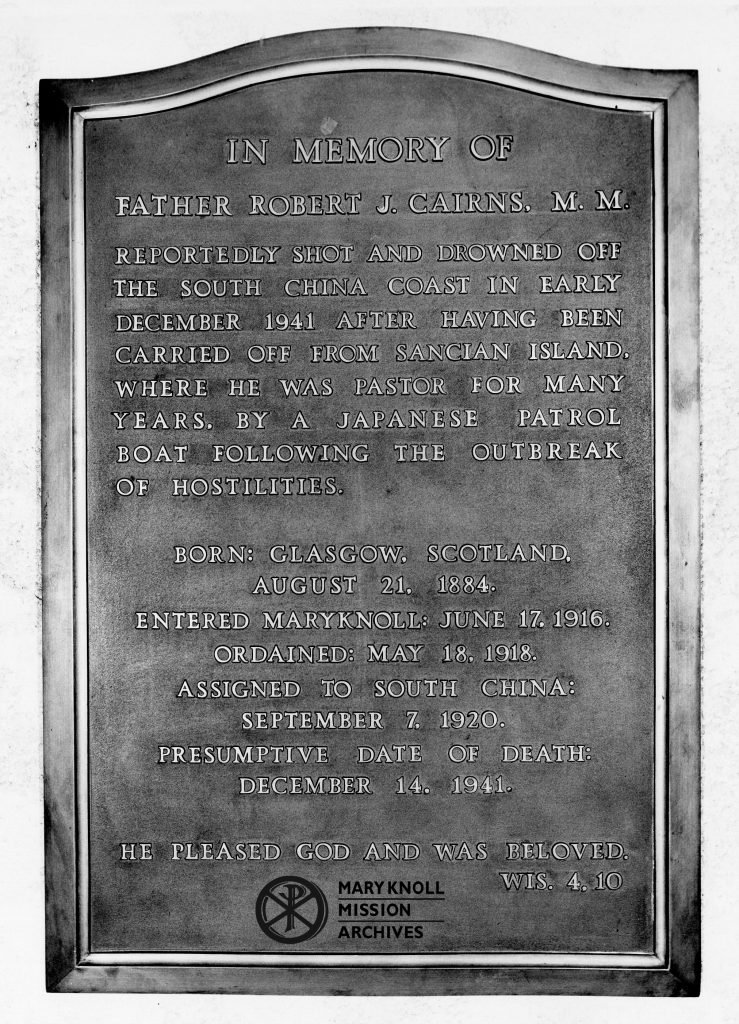
Memorial plaque for Fr. Robert J. Cairns, M.M. Located on Sheungwan Island, China. The memorial is located near the site of St. Francis Xavier’s death.
The Greatest Sacrifice
In the end, his desire to serve others was his greatest achievement and the culmination of his life. Fr. Cairns refused to leave his parishioners on Sheungwan Island when Japanese soldiers invaded on December 8, 1941. On December 14, soldiers returned to the island and forced him onto a boat. Being a priest may have saved his life during World War I, but it led to his martyrdom during World War II.
It hurts to imagine his mother and siblings waiting and hoping for news, only to be told that no one knew his location. Maryknollers prayed that he had been placed in an internment camp in Canton, but they received news that he had never been seen there. His body was never recovered. The little evidence we have suggests that he was murdered and left to the sea shortly after his kidnapping.
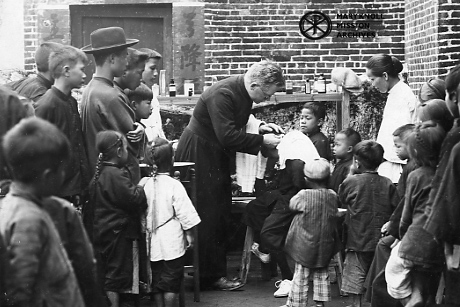
Contact the Archives
Do you have a relative associated with Maryknoll? Their records might also be in the Mission Archives. We would love to help you reconnect with your family’s history. You can contact the Archives at:
Maryknoll Mission Archives
PO Box 305, Maryknoll, New York 10545
Phone: 914-941-7636 ext. 2500
Office hours: 8:30 am-4:00 pm Monday-Friday
Email: archives@maryknoll.org
Website: www.maryknollmissionarchives.org

Cairns Family, circa 1930’s
References
The Church of Jesus Christ of Latter-day Saints. (2021, December 26). Robert John Cairns,”United States World War I Draft Registration Cards, 1917-1918″. FamilySearch.org. https://www.familysearch.org/ark:/61903/1:1:KXBK-Y19.
Father Robert J. Cairns, MM. Maryknoll Mission Archives. (2014, April 17). https://maryknollmissionarchives.org/deceased-fathers-bro/father-robert-j-cairns-mm/.
History.com Editors. (2009, November 5). U.S. Congress Passes Selective Service Act. History. https://www.history.com/this-day-in-history/u-s-congress-passes-selective-service-act#:~:text=To%20that%20end%2C%20Congress%20passed,response%20to%20the%20military%20draft.
Wikimedia Foundation. (2021, May 15). Clan Cairns. Wikipedia. https://en.wikipedia.org/wiki/Clan_Cairns#:~:text=The%20surname%20Cairns%20is%20derived,who%20lived%20near%20a%20cairn.
XrysD. (2009, June 14). File: Scotland administrative map 1947.PNG. Wikimedia Commons. https://commons.wikimedia.org/w/index.php?curid=7021595.

Hello, Meagan – I am also a distant relative of Fr Sandy Cairns through my mother (nee Ferrie) who grew up in Worcester. I graduated from Holy Cross unaware of Fr Cairns. Twenty years ago, I was living in Hong Kong and my mother mentioned her relative.
I did a lot of research at that time and discovered the Holy Cross connection. I tried to visit Sanchien Island but could not make it work at the time.
I found a book about Fr Cairns written by some Holy Cross alumni. I got in touch with a professor I had at Holy Cross and he sent me historical documents that Holy Cross had in the archives.
I was wondering where you live now. I live in New York.
– Elizabeth OConnor
Hello Elizabeth! It’s always nice to meet a new relative. I would love to hear more about your research at Holy Cross, and discuss our family connection. Please email me at archives@maryknoll.org so we can connect. Thank you so much for reaching out!
Hello Meagan, I found your article by chance. I am also a distant relative of Father Sandy Cairns, I am originally from Fife Scotland, mother from Maryhill Glasgow, I heard about Father Sandy Cairns when I was young, and my Gran actually had a few little items Christmas card etc. from him, easy to copy and send to you if you are interested. I also see Elizabeth O’Connor commented above, I think some years ago I posted on Ancestry and she contacted me, and yes the connection from my Gran Catherine Irvine was through the Ferrie line of the family. Would love to hear from you when you have time. I now live in Virginia, but go to Scotland yearly to spend time with family, and I still have cousins in Glasgow.
Glad to finally see Fr. Sandy get some internet time. My grandfather was Thomas Cairns, Fr. Robert Cairns brother (the first of the “Yankee” babies of Robert and Janet Allison Cairns). My father, also Thomas, was close to Fr. Sandy both growing up in Worcester, and then after most of the family moved to San Diego, California, in 1920. At the end of 1930, when Fr. Sandy can back to America after his first ten years in China, my father drove him around Southern California on a fund-gathering trip, visiting parishes in the Southland. My dad wrote to him regularly and I have a number of Fr. Sandy’s letters he sent to my dad. I have many personal photos of Fr. Sandy, both before ordination and after, including many of the pictures he took in China (which I hope the Maryknoll archive has copies of). I know both of your family lines, as many years ago Tommy Kimmet got in touch with me and we exchanged our large genealogy data bases with each other between the Ferrie and Cairns families. I even made contact with descendants of Helen Ferrie O’Neill, who had lived in Chicago. Many years ago I contacted the archive there at Maryknoll and hoped one day to travel east and dive into it, but, alas, being on the northern coast of California (Humboldt County), it’s a long ways away. Again, nice to see “family” working there at Maryknoll. P.S. Do either of you have, or seen a copy of, the photo taken at Maryhill in early 1931 with all the Cairns and Ferrie family and Fr. Robert Cairns? It’s quite a picture. I have a newspaper article from the Glasgow newspaper at the time, as Fr. Sandy arranged a trans-Atlantic telephone call between his mother, Janet Allison Cairns, and one of her sisters. They hadn’t physically spoken to each other for 46 years, ever since the Cairns left Glasgow in 1885. And in 1954, my grandfather Thomas and his brother Archibald, who was the oldest Cairns child, and born in Glasgow, made a trip back to Worcester, following Archie’s wife’s death. They spent 6 weeks in Worcester looking up all the old family, including the Ferries. It was the first time back for both of them since 1919-20. Only brother James Cairns had remained in Worcester out of all the family.
Hello – I am also a relative of Fr Cairns. My Grandmother, Marion Cairns, was his sister. He was my Mom’s uncle. In fact in the family picture above the two people on the far left are my grandparents: Marion and Alfred Kent Seymour. They were married in 1923 and my Mom was born in 1925. The “Allison” name still runs on the female side of our family. My sister, her daughter and HER daughter all carry Allison as their middle name. And my sisters first name is Janette, named after my Mom’s grandmother Janet. Have you read the book about Fr Rob (that’s what my Mom called him). It’s called “Three Days to Eternity”. Hopefully you’re still reading these! I hope to hear from you.
Hello Jill, I am definitely still reading these and am so grateful to everyone that has contacted me. It’s been wonderful to meet so many new relatives! Please check your email for more from me. I hope to hear back from you soon!
Hello fellow San Diego second cousin–I was born and raised on Point Loma/Ocean Beach, but living in Humboldt County. I still have the family house and my sister Mary Cairns lives there. Visited your house a couple of times, but you were a toddler. Don’t forget the 1958 movie China Doll, staring Victor Mature, where Ward Bond plays “Father Cairns”. It made a minor headline in the Worcester Telegram when the movie came out, as they related it to the “Three Days to Eternity” book, and Fr. Rob’s work in China. Also, the 1944 movie “Keys to the Kingdom,” based on the 1941 book, staring Gregory Peck, Thomas Mitchell and Vincent Price. Not based on Fr. Rob, it does entail an interesting look at a Scottish priest going to China (Fr. Rob was born in Scotland).
Hello. My husband, Frederick Cairns, is Thomas Cairns’ 1st cousin. I just wanted to let you know that we have Father Rob’s pocket watch with the bleeding heart. It was given to him by his father, Robert Cairns, who is the son of Archie Cairns.
Meagan I believe that early on in your new position my grandson, another Thomas Cairns, emailed you when he was in middle school.
If you are interested I have created a diagram of the family photo shown above. It identifies the family groupings along with there names